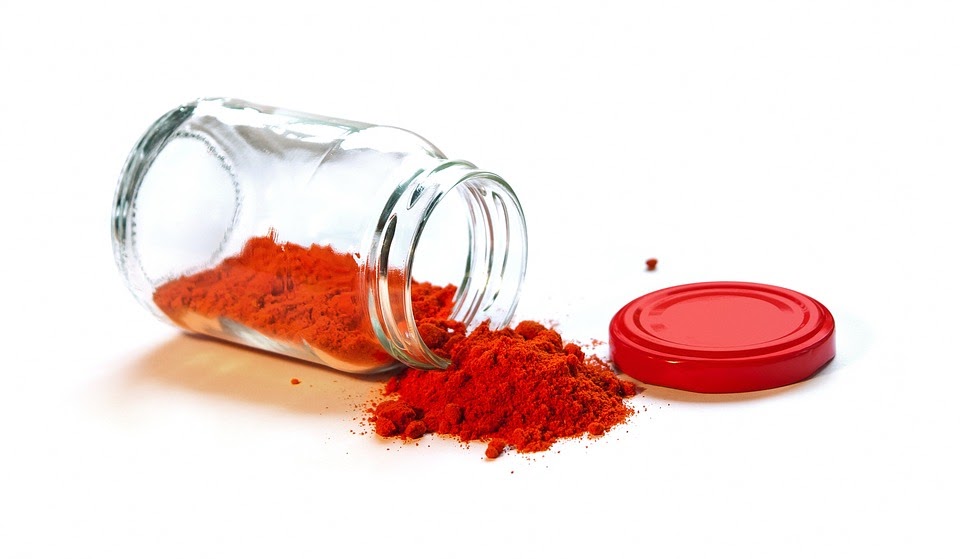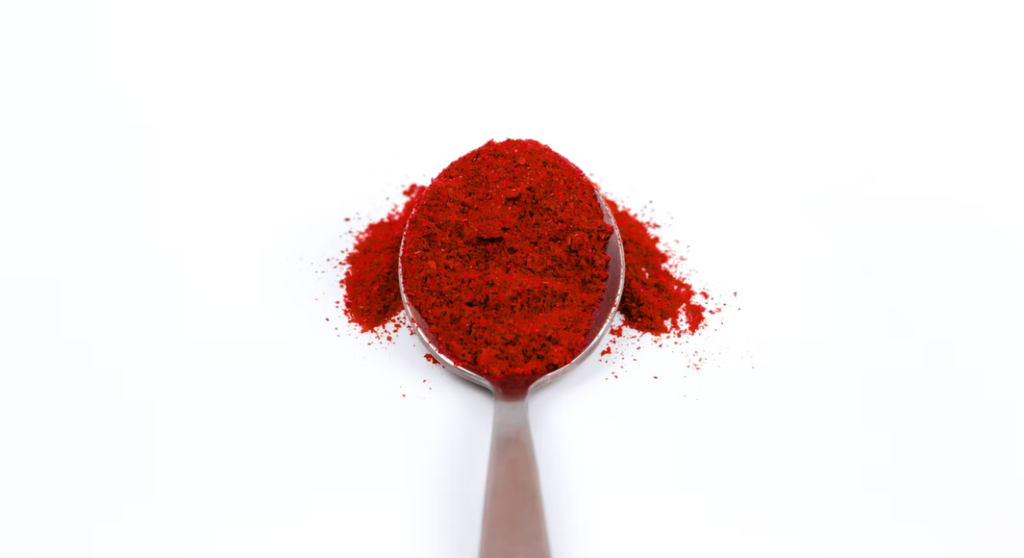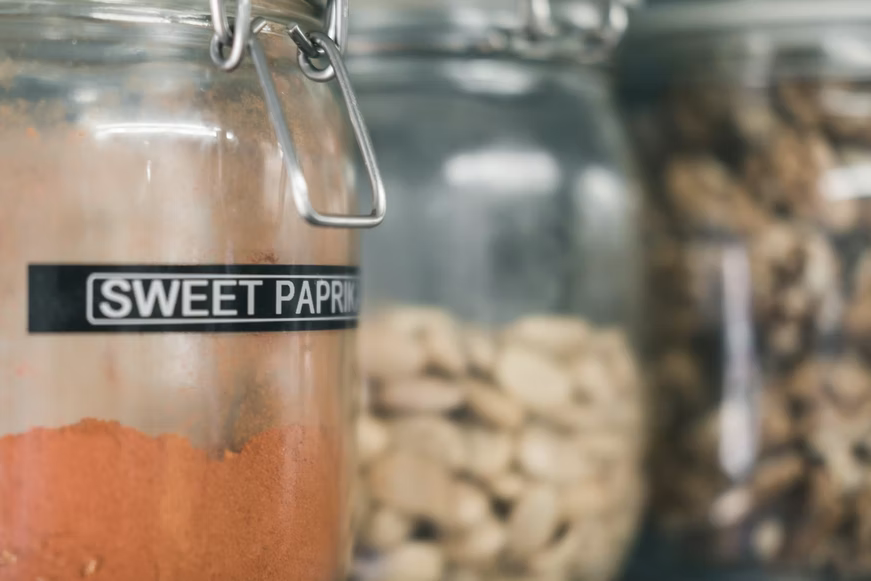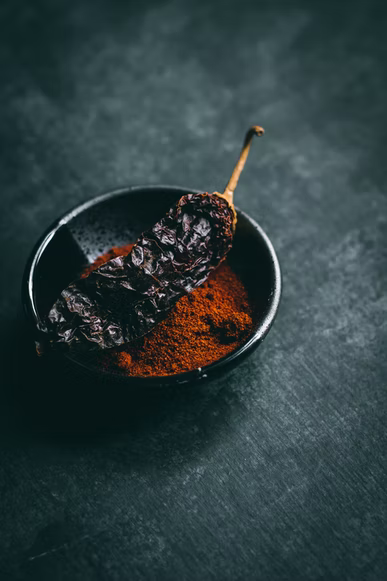What is Paprika? Usage, Types, and Smoked Paprika Vs Paprika
Paprika has a special place in every house kitchen and is used in savory recipes to make them more flavorful. But do you know the difference between smoked and hot paprika? Instead, you think different varieties do not make any difference.
If you do not know the difference between regular paprika and smoked, sweet, and Hungarian paprika, this article will surely solve your puzzle and let you apprehend where and how you can use them. Besides this, every paprika comes in a different color and size. So, let’s get deeper.
However, if you are a few of them who has never used paprika in their lives, let us give you an overview of the paprika.
What Is Paprika?
Paprika is a blend of dried peppers from the Capsicum Annuum family that includes varieties of papers. Depending on the peppers used, the color of paprika changes from radiant orange-red to a deep blood red. The types of peppers used in the preparation of paprika are hot chili peppers, cayenne peppers, poblano peppers, Aleppo peppers, sweet peppers, and others.
Is Paprika Spicy?
As we have mentioned earlier, the types of peppers used in the paprikas vary, the paprika’s spiciness changes similarly. You will see some paprikas are too hot and spicy, having the essence of fiery hot peppers. On the contrary, some are sweet, containing no heat and a gentle savior.
Primarily, paprika’s spice level entirely hangs on carotenoid flavors present in the fresh peppers. These fresh peppers are being used in the powder, and its spice level one can measure by the Scoville heat unit scale.
Origin of Paprika
Initially, the origin of paprika lies in Central Mexico as it is cultivated here. In the sixteenth century, it went outside Mexico and was brought to Spain for the first time. Afterward, it spread worldwide, including Asia, Africa, the USA, and other countries. Above all, Hungarian cuisine is incomplete without paprika, and paprika is exquisitely used as salt or pepper in Hungarian cuisine.
Now, let’s move towards the popular types of paprika and unfold some never heard facts.
Types Of Paprikas
Depending on the spice present in the paprika, its types are divided into three classes – smoked paprika, sweet paprika, and Hungarian paprika — also, the tang of paprika changes as per its cultivation place.
So, next time when you are purchasing paprika, keep these points in mind and select the right paprika for your cuisine to make it more flavorsome.
Smoked Paprika
Smoked paprika is favored by many names, such as pimenton, smoked pimenton, and Spanish paprika. Do you know how it came into existence? Before mailing them into a powder, peppers slowly roasted over an oak fire. Due to this, smoky flavor gets added into the final spice, and smoked paprika happens. It gets typically used along with potent condiments, like hot sauce.
Different Ways To Use Smoked Paprika In Cuisine
Smoked paprika adds a bittersweet and smoky taste to the recipes you cook. It will help if you use smoked paprika in the following cookeries.
Jambalaya
A sizzling Cajun dish is made with varieties of items such as sausage, chicken, shrimp, chicken broth, and tomatoes. And adding smoked paprika will make this dish more delicious and flavorful.
Dry Rubs
Include smoked paprika and other hot spices on meat or seafood to make it smokier.
Smoky Potatoes
Who does not like potatoes? Everyone does! Above all, adding smoked paprika to potatoes will add authentic taste.
Ratatouille
Want to add BBQ flavor to vegetable stew? What’s better than smoked paprika?
Smoky Deviled Eggs
Give a unique turn to classic deviled eggs with smoked paprika. You will definitely love it.
Sweet Paprika
The color of any dish is equally essential. To add vibrant color to any dish, you can use sweet paprika as it is sweet in flavor and has no heat. If any recipe does not specify the type of paprika you need to add, you can go with this.
For example – you can use sweet paprika in deviled eggs, potato salad, and meat rubs.
Some dishes like Chorizo Roasted Poblano Pepper Wild Rice Stuffing require a combination of sweet paprika and smoked paprika. Sweet paprika calms down the heat and gives the sweet flavor.
It should be used in dishes that contain extra spices. You can use this in Moroccan Butternut Squash Chickpea Stew, Slow-Cooked BBQ Pork Roast, and other dishes. However, we do not recommend using sweet paprika to substitute smoked paprika.
Hungarian Paprika
In Hungary, you will rarely come across dishes that do not contain paprika, as it is the federal tang of Hungary. The surprising thing is Hungarian paprika comes into eight types, giving you different heat and flavor.
The popular one is Edesnemes, also known as Noble Sweet, a slightly tangy spice. However, other Hungarian paprika has different tastes: light, rose, strong, and semi-sweet. According to the recipe requirement, you can use any one of them.
Here are some of the recipes where you can use the Hungarian paprika are Goulash, Paprikás Szalonna, Paprikash, Stuffed cabbage with paprika, Lecsó, Fishermen’s soup, Töltött paprika, Körözött, Hortobágyi palacsinta, and Marhapörkölt.
Smoked Paprika Vs Paprika
Do you also get confused between regular paprika and smoked paprika? Well, everyone does at some point. So, here are some key differences you should know while making your decision on regular paprika and smoked paprika.
Flavor
Smoked paprika is mainly used in BBQ dishes as it has a rich and heavy flavor that perfectly goes with BBQ items. The reason behind this is that smoked paprika goes through different levels of preparation, like smoked-dried chili peppers dried on an oak fire and then crushed into the powder.
In contrast, regular paprika is directly made with crushed dried chili peppers. So, you can better use the regular paprika for dishes like garlic chicken.
Uses
Smoked paprika adds delicious yet smoky flavors to BBQs, as discussed in the flavor section. On the other hand, regular paprika works best when it comes to garnishing.
Heat Levels
Regarding heat, smoked paprika’s heat level varies from gentle to severe. Nevertheless, regular paprika contains a very basic level of heat.
Paprika Substitute
Choosing a paprika substitute is a hard call as we need to see the recipe requirement, and sometimes, it is not possible to use the alternative. But in the absence of paprika, you need to recreate its magic, which can be done through other paprika substitutes.
The substitute you can use is dried chili, like ground cayenne, red chili powder, crushed red pepper flakes, or hot sauce. However, if the recipe demands smokiness, prefer crushed ancho powder or chipotle powder.
Health Benefits Of Paprika
We discussed paprikas’, uses, types, and substitutes in the above segments. However, it does stop here. Paprika is rich in antioxidants, vitamins, and minerals. As a result, it gives several science-backed health benefits you hardly heard about.
Rich In Nutrients
Paprika is a combination of micronutrients and beneficial compounds. With 1 tablespoon of paprika, you will get the following benefits.
| Calories | 19 |
| Protein | Less Than 1 Gram |
| Fat | Less Than 1 Gram |
| Carbs | 4 Grams |
| Fiber | 2 Grams |
| Vitamin A | 19% of the Daily Value (DV) |
| Vitamin E | 13% of the DV |
| Vitamin B6 | 9% of the DV |
| Iron | 8% of the DV |
The small one tablespoon fulfills 20% intake of daily vitamin A deficiencies. It also contains various antioxidants, which fight against cell damage caused by reactive molecules, also known as free radicals.
These free radicals further cause chronic illnesses, such as heart disease and cancer.
Enhances Eye Health
Paprika is a source of nutrients, and it also contains the nutrients that improve eye vision. The nutrients present are vitamin E, beta carotene, zeaxanthin, and lutein. Lutein and zeaxanthin are antioxidants that prevent your eyes from damage.
Lessen Inflammation
Compound capsaicin is present in some specific varieties of paprika. It’s being said that receptors present on nerve cells secure via capsaicin. As a result, it reduces inflammation and pain. Further, it acts as a shield against autoimmune conditions, such as arthritis, digestive problems, and nerve damage.
Maintain Cholesterol Levels
Many studies show that paprika helps in maintaining cholesterol levels. It found that paprika raises a good level (HDL) of cholesterol, resulting in lower heart disease risk.
Gives Protection Against Cancer
Paprika contains numerous compounds that give you protection against cancer. The carotenoids such as beta carotene, lutein, and zeaxanthin reduce oxidative stress, the leading cause of several cancers.
Control Blood Sugar
For diabetic patients, paprika is the best cure as it helps manage diabetes. It influences genes in the blood sugar control and interferes with enzymes for breaking down sugar in your body. As a result, it enhances insulin acuity.
Essential For Healthy Blood
Both iron and vitamin E is essential for healthy blood and paprika has both. Iron is vital in hemoglobin, which acts as a protein in red blood cells to carry oxygen in the body. On the flip side, Vitamin E creates healthy membranes for these red blood cells.
It reduces the risk of anemia as deficiencies in any of them can cause anemia to result in tiredness, pale skin, and breath shortness. So, including paprika in your diet will really help.
Conclusion
Paprika is not an ordinary spice; proper use of this can be highly beneficial to your health. In this article, we have discussed,
- What is paprika for people who are unfamiliar with this unique spice?
- Paprika’s spiciness, followed by its origin
- Types of paprikas and their usage
- Difference between regular paprika and smoked paprika
- Substitutes of paprika one can use
- Lastly, its never-ending health benefits
So, add an adequate amount of paprika to your daily diet and experience powerful benefits.





